Haunted Trucks, Ghostly Theaters, and Creepy Picnics: The Year’s Best Horror Stories: Series XII, edited by Karl Edward Wagner
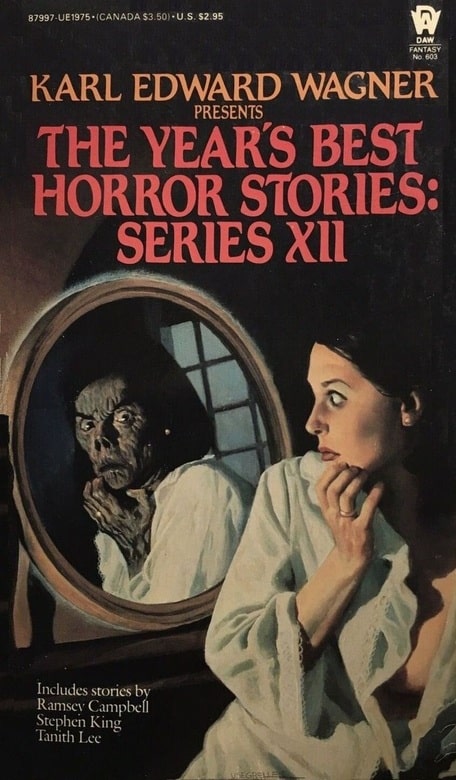 |
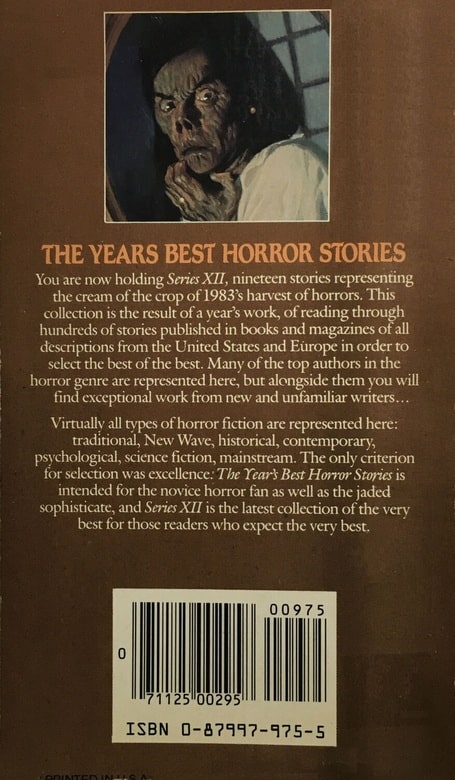 |
The Year’s Best Horror Stories: Series XII (DAW, November 1984). Cover by Vicente Segrelles
The Year’s Best Horror Stories: Series XII was the twelfth volume in the DAW Year’s Best Horror series and the fifth edited by the great Karl Edward Wagner (1945–1994). The book was copyrighted and printed in 1984. After nine covers by Michael Whelan, we have a new cover artist, the Spanish artist Vicente Segrelles (1940–). I think this is a frightening cover and less fantastic than those that Whelan often did. I had this by my bed one night and actually turned the book over because the lich-woman in the mirror was sort of creeping me out. That’s pretty good horror art!
But an even bigger artistic change is that this is the first DAW Year’s Best Horror without the famous yellow DAW spine and the famous DAW yellow tag on the cover; though the DAW “number” is still ongoing, this one being 603. This major aesthetic switch came about for all of DAW’s titles in late 1984. I assume that the DAW powers-that-be thought after about twelve years a change was needed. Maybe, but it does sadly mark the end of an era in paperback publishing. Nevertheless, the cover font of The Year’s Best Horror Stories: Series XII is still similar to previous volumes, keeping it artistically in a line to some degree.
The Year’s Best Horror Stories XII and its non-yellow spine
There were nineteen authors featured in The Year’s Best Horror Stories: Series XII —the most yet, though the book isn’t significantly larger than previous volumes. Fourteen contributors were male, five were female. Eleven were American authors, six were British, and there was one Canadian and one German-born author. Nine stories came from books, usually collections or anthologies. Seven came from professional magazines, and only three from fanzines, which is a change. Most of Wagner’s selections in his earliest volumes had been from fanzines. The fact that he was now making selections from books and magazines seemed to reflect that horror was becoming a more readily available genre in the mid-1980s compared to the 1970s.
Wagner’s introduction continues his trend of giving a sort of “state of the union” for the horror field. According to him, many were claiming that the horror boom was over in 1983. Apparently, horror sales were down and so “the experts” were saying that the horror genre had peaked. But according to Wagner, the only thing that had peaked was the market for “trash horror novels” (p. 12). And good riddance! But Wagner claims that horror was still strong, alive and well in the short story market.
I have, overall, been generally positive about all the previous volumes in this series. I’ve liked some less than others. But, in general, these have all been great horror anthologies. But with the previous volume, my reservations grew a bit. I will highlight a few of my favorite stories in this book (some were still quite excellent) and then give some commentary on the book as a whole, which I think will operate primarily as a critique of Wagner’s editorship.
The first few tales, I thought, were not the greatest horror stories. Stephen King is of course a well-known master of horror; but the premise of “Uncle Otto’s Truck” is that an old abandoned truck is slowly creeping up to kill one Uncle Otto. It’s a ridiculous premise and not scary. And the following stories, “3.47 AM” by David Langford, “Mistral” by Jon Wynne-Tyson, and “Out of Africa” by David Drake — who is usually a very good writer — were also all rather disappointing. Again, some good writing here, but the horror was not very convincing.
Four stories in I was beginning to wonder if this was going to be the first turkey that Wagner had delivered. But the next few stories were excellent. “The Wall-Painting” by Roger Johnson was a M. R. James-type of ghost story that was very effective. And then “Keepsake” by Vincent McHardy was the first truly terrifying story, about a child’s toy that is taken away by a teacher. The Year’s Best Horror Stories: Series XII was starting to get incredibly better.
“Echoes” by Lawrence C. Connolly was also excellent — probably the shortest truly effective horror story I have ever read. “After-Images” by Malcolm Edwards was more a straight-up science fiction story but with one very horrific scene. It was well-written, though not really a horror story. “Come to the Party” by Frances Garfield (incidentally, the wife of Manley Wade Wellman) was also a very chilling and effective ghost story.
There were other stories that were very good but not very scary or horrific, including Jane Yolen’s “Names,” a tale about the holocaust. Personally, I have hard time entering into the joyful frisson of horror when the horror is actually real. But a very well-written story. “The Attic” by Billy Wolfenbarger was very beautifully written. According to Wagner’s intro, it was actually a snippet from a novel. It did a good job setting a scary mood, but nothing really happens. Wolfenbarger’s prose is excellent, but again, it wasn’t really horror.
I also enjoyed David J. Schow’s “One for the Horrors” which is about an old theatre that shows only pristine (and seemingly non-existent) old horror movies. Nothing scary happens, and it’s not until the end that you realize it’s actually a ghost story. It even has a very happy ending — not what you normally expect in a horror story, but a pleasant little tale indeed.
Alone with the Horrors: The Great Short Fiction of Ramsey Campbell 1961–1991 (Arkham House,
February 1993), containing 42 stories by Ramsey Campbell, including “Just Waiting.” Cover by J. K. Potter
Probably the scariest story, and my favorite in this volume, was Ramsey Campbell’s “Just Waiting.” I’ve complained in past reviews that I rarely find Campbell an effective horror writer, mainly because I struggle to follow his British-isms. But occasionally I find his writing absolutely terrifying. “Just Waiting” fits that bill. A young boy, Ian, and his parents go into the woods to have a picnic. But upon arriving at a lone picnic table area, there are two strange-looking attendants who begin to serve them, bringing out china and cutlery. Waiters?
The family brought their own food, but the waiters proceed to dish it out for them onto the plates. The whole scene feels surreal and you can sense that something is clearly not right, though the parents seem oblivious. But the Ian keeps noticing strange things about the waiters:
Their feet looked thin as a bunches of twigs, and appeared to be gripping the earth; he saw grass and soil squeezing up between the knuckly toes. (p. 172).
A few moments later,
They smiled and spread their hands. Their mouths looked even wider and paler, and Ian could see no lines on the palms of their hands. (p. 173).
Like most children at a picnic, Ian is constantly anxious to leave the table. When he eventually does, he surprisingly runs into a family at another table. (Ian and his family thought they were the only ones at the picnic table area.) The family is shocked to see Ian as well, as if he seemingly popped into existence. Ian looks back at his own family, which ends up being the last time he will ever see them:
He looked back once. A waiter stood behind each of his parents: waiting to be paid, or to clear the table? They must be impatient for their toes to be scratching at the earth like that. (p. 173).
A creepy tale.
So, there are more than a few good horror stories in this volume. But there were quite a few others that were not scary or horrific, or were only tangentially so. In my opinion, the volume seemed to reflect a sort of self-indulgence on the part of Wagner.
I can appreciate a pushing of boundaries. In some ways, a reprint anthology is an editor’s “argument” for what qualifies as good in that genre. And I also admit that my tastes in horror are probably not Wagner’s. But what Wagner was beginning to include by his fifth edited Year’s Best Horror Stories seems not to reflect the truly best, but rather Wagner’s own idiosyncratic tastes. Perhaps this criticism is too broad since it might apply to any editor. But that is my sense for this volume.
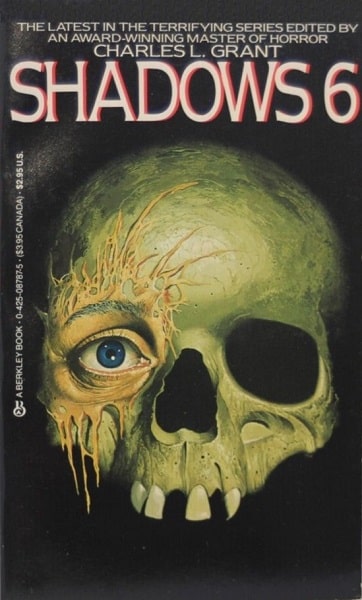 |
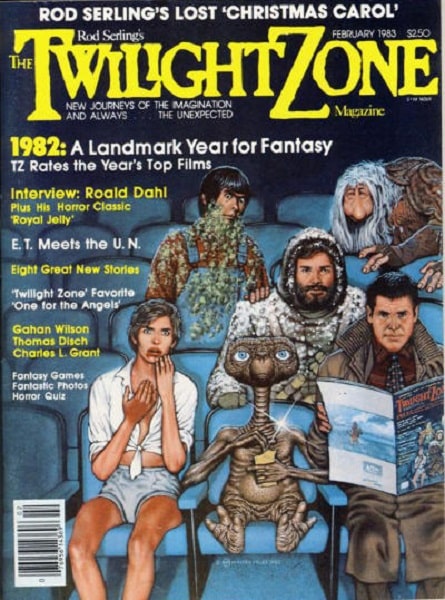 |
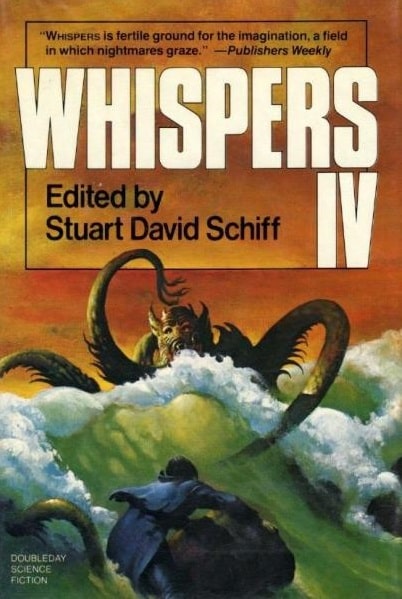 |
Some of the story sources: Shadows 6 (Berkley, November 1986); The Twilight Zone Magazine,
Jan/Feb 1983; Whispers IV (Doubleday, July 1983). Covers by Les Edwards, Walter Velez, and Stephen E. Fabian
Despite this criticism, and despite a few less-than-horrific stories, this was still a good collection. Here’s the complete Table of Contents for The Year’s Best Horror Stories: Series XII:
Introduction: Of Fads and Frights, by Karl Edward Wagner
“Uncle Otto’s Truck” by Stephen King (Yankee, Oct. 1983)
“3.47 AM” by David Langford (The Gruesome Book, 1983)
“Mistral” by Jon Wynne-Tyson (Rod Serling’s Twilight Zone Magazine, Aug. 1983)
“Out of Africa” by David Drake (The Heart of Darkness, 1983)
“The Wall-Painting” by Roger Johnson (Saints and Relics, 1983)
“Keepsake” by Vincent McHardy (Quarry Magazine, Spring 1983)
“Echoes” by Lawrence C. Connolly (Rod Serling’s Twilight Zone Magazine, Jan./Feb. 1983)
“After-Images” by Malcolm Edwards (Interzone, Spring 1983)
“The Ventriloquist’s Daughter” by Juleen Brantingham (Whispers 19–20, 1983)
“Come to the Party” by Frances Garfield (Whispers IV, 1983)
“The Chair” by Dennis Etchison (The Dodd, Mead Gallery of Horror, 1983)
“Names” by Jane Yolen (Tales of Wonder, 1983)
“The Attic” by Billy Wolfenbarger (Dark Horizons 26, 1983)
“Just Waiting” by Ramsey Campbell (Rod Serling’s Twilight Zone Magazine, Nov./Dec. 1983)
“One for the Horrors” by David J. Schow (Whispers 19–20, 1983)
“Elle Est Trois (La Mort)” by Tanith Lee (Whispers IV, 1983)
“Spring-Fingered Jack” by Susan Caspar (Fears, 1983)
“The FLASH! Kid” by Scott Bradfield (Interzone, Autumn 1983)
“The Man with Legs” by Al Sarrantonio (Shadows 6, 1982)
Previous installments in this series include:
Introduction To DAW Books’ The Year’s Best Horror Stories (1972–1994)
The Year’s Best Horror Stories: Series I (1972)
The Year’s Best Horror Stories: Series II (1974)
The Year’s Best Horror Stories: Series III (1975)
The Year’s Best Horror Stories: Series IV (1976)
The Year’s Best Horror Stories: Series V (1977)
The Year’s Best Horror Stories: Series VI (1978)
The Year’s Best Horror Stories: Series VII (1979)
The Year’s Best Horror Stories: Series VIII (1980)
The Year’s Best Horror Stories: Series IX (1981)
The Year’s Best Horror Stories: Series X (1982)
The Year’s Best Horror Stories: Series XI (1983)
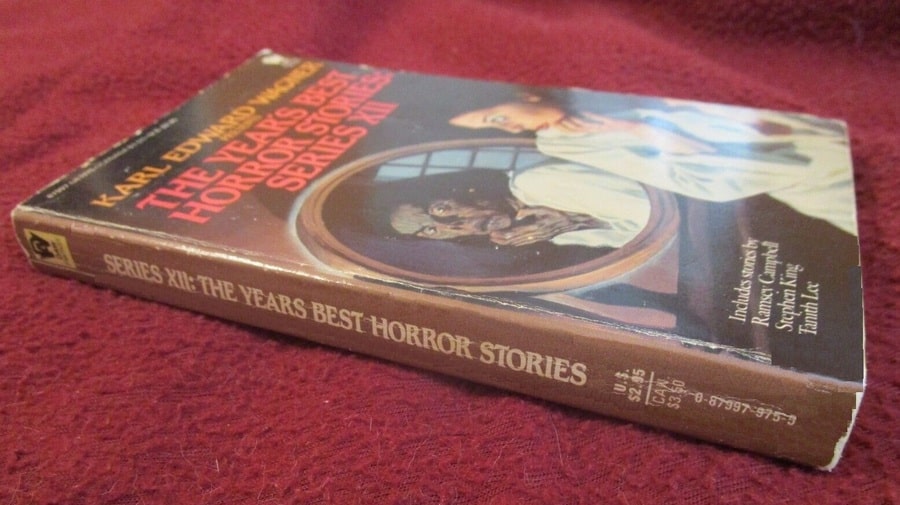
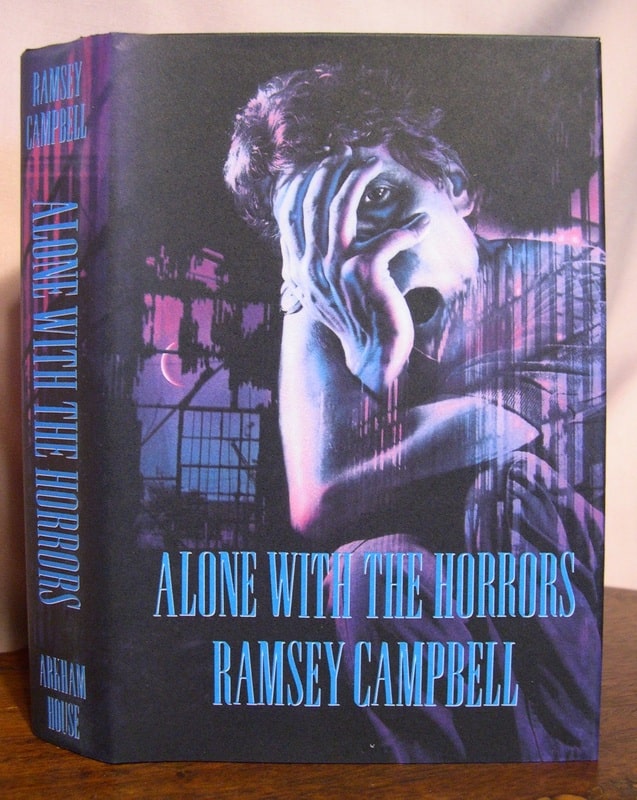
Mr. King’s story, “Uncle Otto’s Truck”, was originally published in Yankee magazine, so I am guessing that he was going for a New England folklore vibe rather than his more usual stark horror. And, if it did not work on the page, maybe try it on the screen, as Wreak Havoc Productions indie-funded a short film, released in September 2019.
And if a collection has Tanith Lee’s “Elle est Trois (La Morte)”, it is a good collection, indeed.
I really liked the Tanith Lee story, but it felt more like sword-and-sorcery than horror. But agreed, any Tanith Lee story improves an anthology.